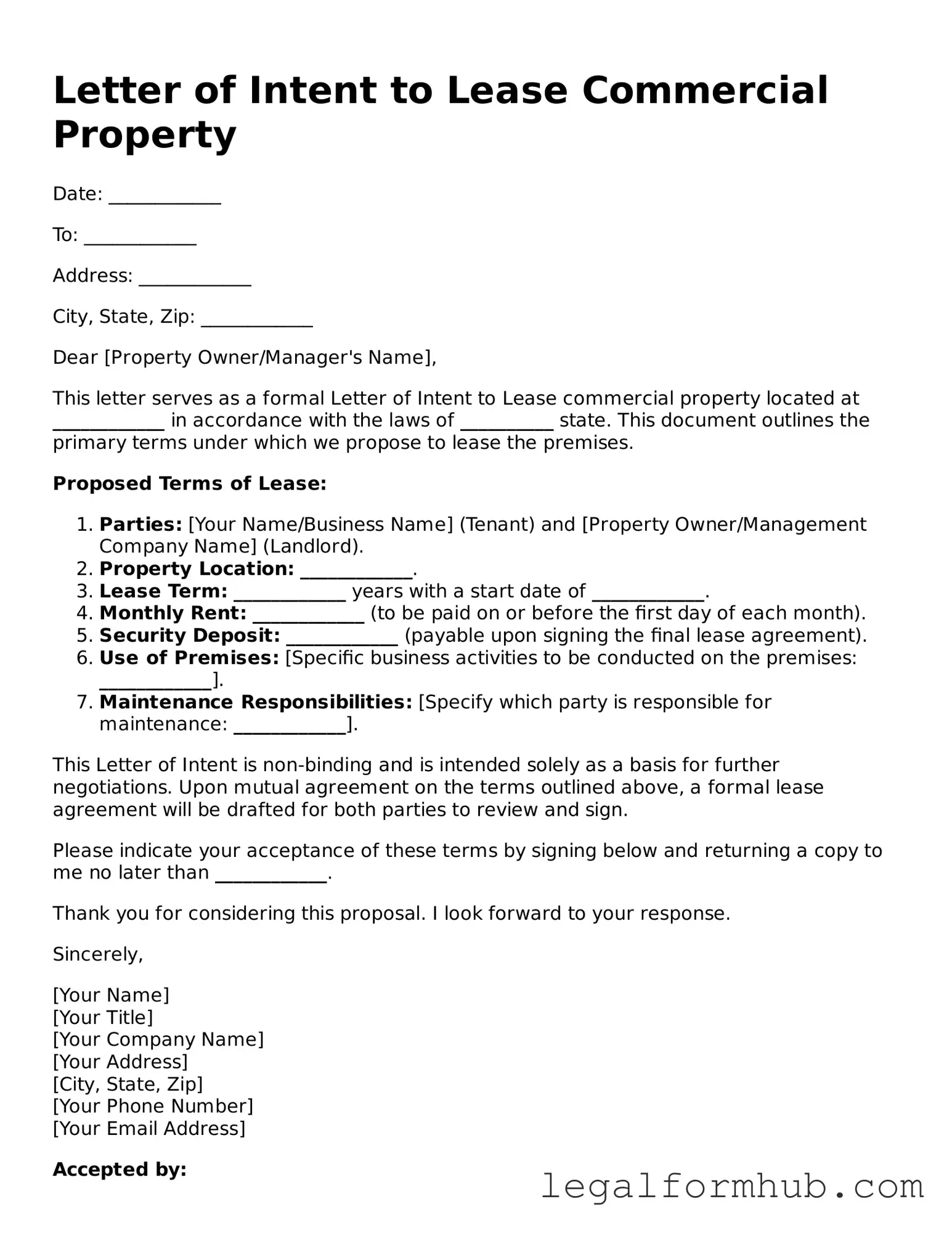The Letter of Intent (LOI) is often compared to a Memorandum of Understanding (MOU). Both documents express the preliminary intentions of the parties involved. An MOU outlines the general principles of a partnership or agreement, while an LOI specifically focuses on leasing terms. Though neither document is legally binding, they serve as a foundation for future negotiations and clarify the expectations of both parties.
Another similar document is the Purchase Agreement. While the LOI is used for leasing, a Purchase Agreement is utilized when buying property. Both documents detail the terms of the transaction, including price and conditions. However, the Purchase Agreement is more formal and legally binding, whereas an LOI is typically a starting point for discussions.
The Term Sheet is also comparable to the LOI. A Term Sheet outlines the key terms of a potential agreement, often used in various business transactions. Like the LOI, it serves as a summary of the main points that will be further negotiated. Term Sheets can apply to leases, sales, or investments, making them versatile in nature.
A Non-Binding Agreement shares similarities with the LOI in that it expresses intent without creating enforceable obligations. Both documents allow parties to outline their goals and expectations. However, a Non-Binding Agreement may cover broader topics beyond leasing, making it more flexible in scope.
The Heads of Agreement document is another that aligns with the LOI. This document summarizes the key points of a deal, often before a formal contract is drafted. It helps parties confirm their understanding of the terms discussed, similar to how an LOI captures the essence of lease negotiations.
A Letter of Interest can also be likened to an LOI. This document expresses a party's interest in leasing or purchasing a property. While an LOI typically includes specific terms and conditions, a Letter of Interest may be less detailed. Both documents aim to initiate discussions and gauge the other party's willingness to proceed.
Understanding the intricacies of commercial leasing documents is essential for making informed decisions. One of the foundational elements in this process is the Letter of Intent (LOI), which signals the beginning of negotiations between landlords and prospective tenants. This document echoes various other agreements in its purpose, such as the Lease Agreement and Purchase Agreement for Real Estate. For those looking to navigate the requirements of homeschooling as an educational option, similar formalities apply; the California Homeschool Letter of Intent form is crucial for compliance with state regulations. Resources like OnlineLawDocs.com can provide valuable guidance on how to properly complete such documents.
The Confidentiality Agreement, while different in purpose, can be associated with the LOI. Both documents often accompany negotiations. A Confidentiality Agreement ensures that sensitive information shared during discussions remains protected, while the LOI outlines the terms of the lease. Together, they create a secure environment for open dialogue.
The Offer to Lease document is closely related to the LOI. An Offer to Lease is a formal proposal that includes specific terms and conditions for leasing a property. While the LOI serves as a preliminary outline, the Offer to Lease is typically more detailed and can lead directly to a binding lease agreement.
Finally, the Lease Agreement itself is the ultimate goal of the discussions initiated by the LOI. This legally binding document contains all the terms and conditions agreed upon by both parties. The LOI sets the stage for the Lease Agreement by summarizing the key points that will be elaborated upon in the final contract.
